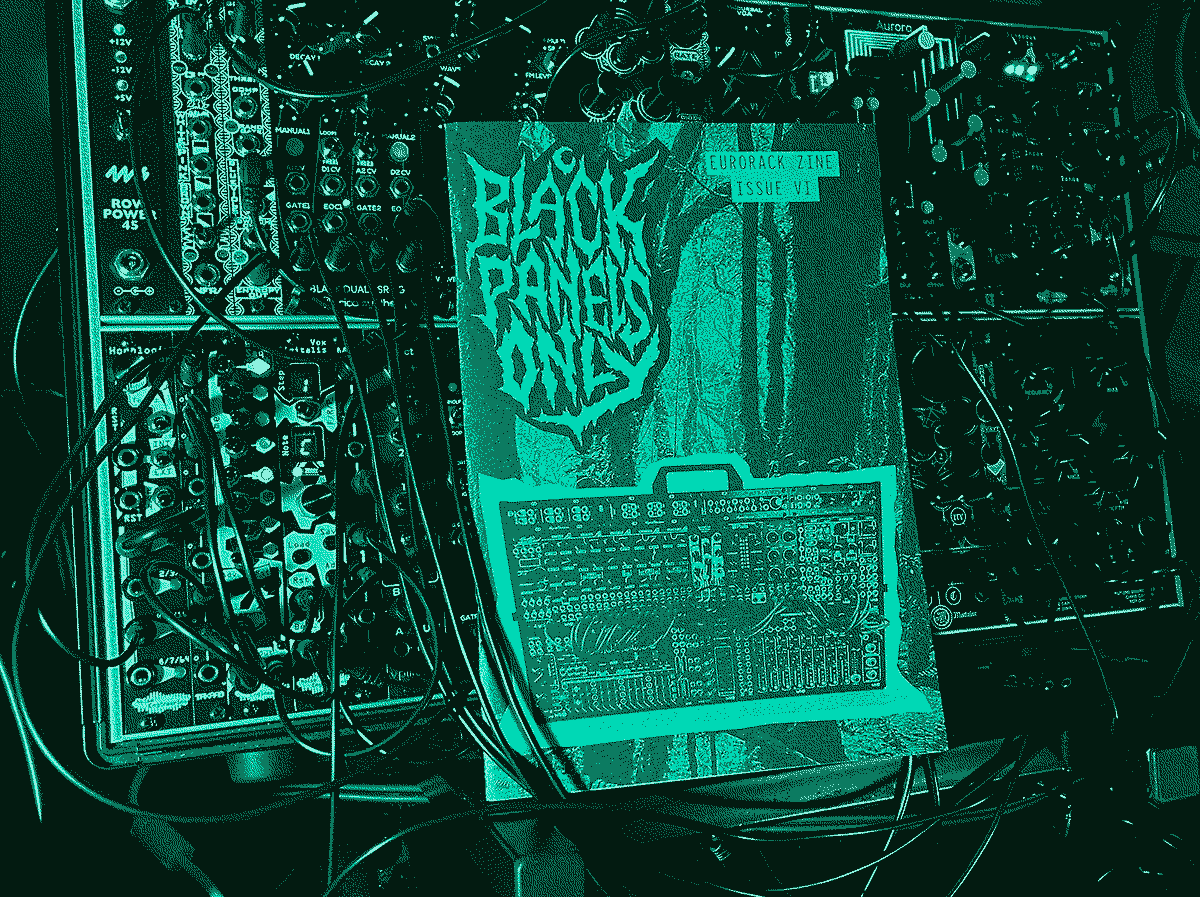Issue VI

The first interview I did for the issue was Manifold Research Centre. I sent them some questions as soon as I saw the Tetragrid announced. It was just so cool to see another company taking a kinda ERD, esoteric approach. I love all of the philosophy surrounding it with the anti-sequencer manifesto and the medieval-astronomy backstory. I know some people don’t buy into that stuff and only care about the sounds, but for me it adds another layer- like the cover art/liner notes on an album.
Charlie Clouser is probably the highest profile person to feature in the zine to date. I was familiar with his scoring work for Saw and Dead Silence and even used the Dead Silence main theme a long time ago at uni as an example in a research project on different musical devices in horror scores (it was a terrible project). The interview came out perfectly, he’s someone that’s probably owned or played every synth there’s ever been, so it was super cool to hear about all the Euro modules he’s into. There’s a really cool video interview from 2016 where he walks through his setup at the time, though there’s a lot of newer modules mentioned in the BPO interview.
Modular duo Broken Circuits put together the biggest My Rack feature to date, breaking down their huge setup. This was a challenge to fit everything onto the pages but I think it worked out! It was interesting to hear about how they like to group manufacturers’ modules next to each other in the rack, into little “eco systems”. For me, i’m pretty strict on placing my modules left-right by signal flow but I don’t think my way is the most conducive for getting creative with patching as it becomes to easy to default to the classic subtractive synth patch. There’s also some benefit to how the modules work together, using modules from the same manufacturer with each other; AJH Synth have talked in the past about the slight variance in design standards between module makers and how, particularly for beginners, having modules from the same manufacturer is going to at least mean there’s some matching in things like expected modulation levels and so things might play more nicely together.
The quote on page 3 is something I came across in a book i’ve been reading- Special Sound: The Creation & Legacy of the BBC Radiophonic Workshop. The part I found most interesting was the initial resistance to electronic music when the workshop was being formed in the late 50s, as the more conservative critics were worried that electronic music was sterile and a bit weird and that it was “music” made by scientists rather than genuine art created by respectable composers.
The cover is Evan Bingham’s rack and the background is some trees from the Anaga Forest in Tenerife. I’ve probably included some photos of twisted trees and roots in most issues at some point. The roots and vines remind me of a mess of patch cables and it’s nice to include some original photos from my trips to make the zine a bit more personal. On the inner pages a lot of the backgrounds are taken from the public domain NASA archives. There’s thousands of photos and they suit several of the manufacturers well. I was particularly happy with the spreads for the AJH Synth interview where I was going for a 50s/60s sci-fi kinda aesthetic, inspired in part by their unique Lunar Module which processes sound to match ground-to-space communications of the time, complete with authentic bleeps- it seemed like a really curious module to come from a company known for serious module reproductions of classic synths but at the same time somehow fits perfectly into their range of modules- if you haven’t come across it before, read more about it and check out the video on their website.
Released 22nd July 2022.
Features:
- Charlie Clouser
- AJH Synth
- Xaoc Devices
- Christina Sealey
- Qu-Bit Electronix
- Blush Response
- Manifold Research Centre
- My Rack - Broken Circuits
- My Rack - Dögenigt
- Rack Photos: Khris Clymer, Evan Bingham